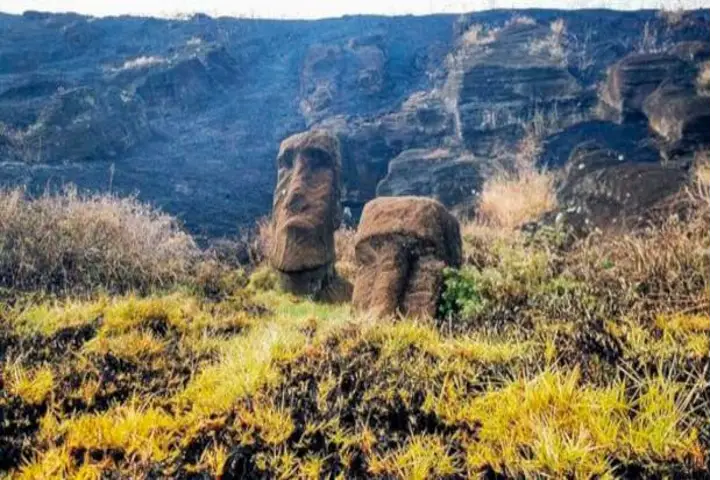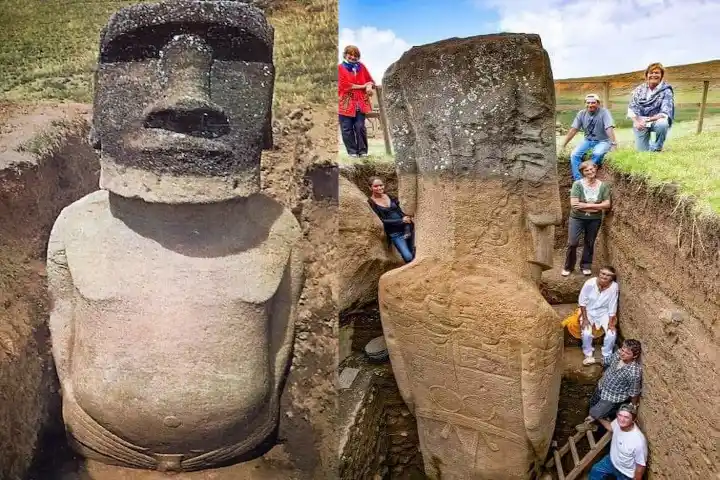Easter Island, the special territory of Chile in the south eastern Pacific Ocean, may be one of the most remote inhabited islands but it boasts of the world’s most unique and iconic statues known as moai. Moai are monolithic human figures carved by the Rapa Nui or Polynesian people indigenous to the island which were declared by UNESCO as a World Heritage Site in 1995.
Chiselled from volcanic rock the height of these moai range from six to 30 feet. There is of course an unfinished one which is more than 70 feet tall.
A fire on Chile’s Easter Island has caused irreparable damage to its iconic ‘Moai’ stone statues. The blaze swept through Rapa Nui National Park earlier this week, causing several stones to crack, Mayor Pedro Edmunds told @Reuters https://t.co/nbEgkBeC2c pic.twitter.com/6qfYsnqdTp
— Reuters (@Reuters) October 8, 2022
The place was in news as per a report in smithsonianmag.com last week as permanent damage was caused to the moai due a fire that swept the island. With the inferno gripping 250 acres of the land, the statues bore the brunt as many crumbled or scorched.
Even though the cause of the fire is not clear, the island’s Mayor Pedro Edmunds Paoa feels it was “not an accident”. He told Radio Pauta, a local broadcaster, “all the fires on Rapa Nui are caused by human beings.”

Rueing the destruction, he remarked: “The damage caused by the fire can’t be undone. The cracking of an original and emblematic stone cannot be recovered, no matter how many millions of euros or dollars are put into it.”
The high temperature due to the fire will probably hasten the degradation process of these iconic statues. “As the stone cracks, with a heavy rain or with time, it loosens, falls and ceases to be stone, and becomes sand,” observed Paoa.
Major damage took place in the area around the Rano Raraku volcano which has more than 300 moai and also the volcanic rock quarry from where these statues came into being. The number of statues burnt and damaged is being assessed by Chile’s National Monuments Council.
This volcanic island saw the Polynesians settling there at 300 CE and in 1888 it was taken over by Chile.
Moai found all over the island have always intrigued historians and scientists alike. These were carved out by the Polynesians between the period 1100 and 1650. They stand for the ancestral chiefs – considered to be descendants of gods – who had extraordinary powers to safeguard the people and community. Recent study has found that there are bodies buried under these giant statues and researchers started digging them in early 2010s.

Another research in 2019 suggested that these statues were put up deliberately by early Polynesians to indicate sources of freshwater in the area.
Till now more than 800 of these statues have been recorded though it is thought that a 1,000 of these exist.
The fire couldn’t have come at a worse time as the island dependent on tourism had reopened three months ago after being shut for two years due to Covid-19 pandemic. Now again it has been closed for the public to assess the damage due to the fire.
Paoa hopes that authorities concerned will put in place plans to avoid such incidents in future. “To prevent fires, we need to have permanent guards at the sites. Resources are required for its care.”




















